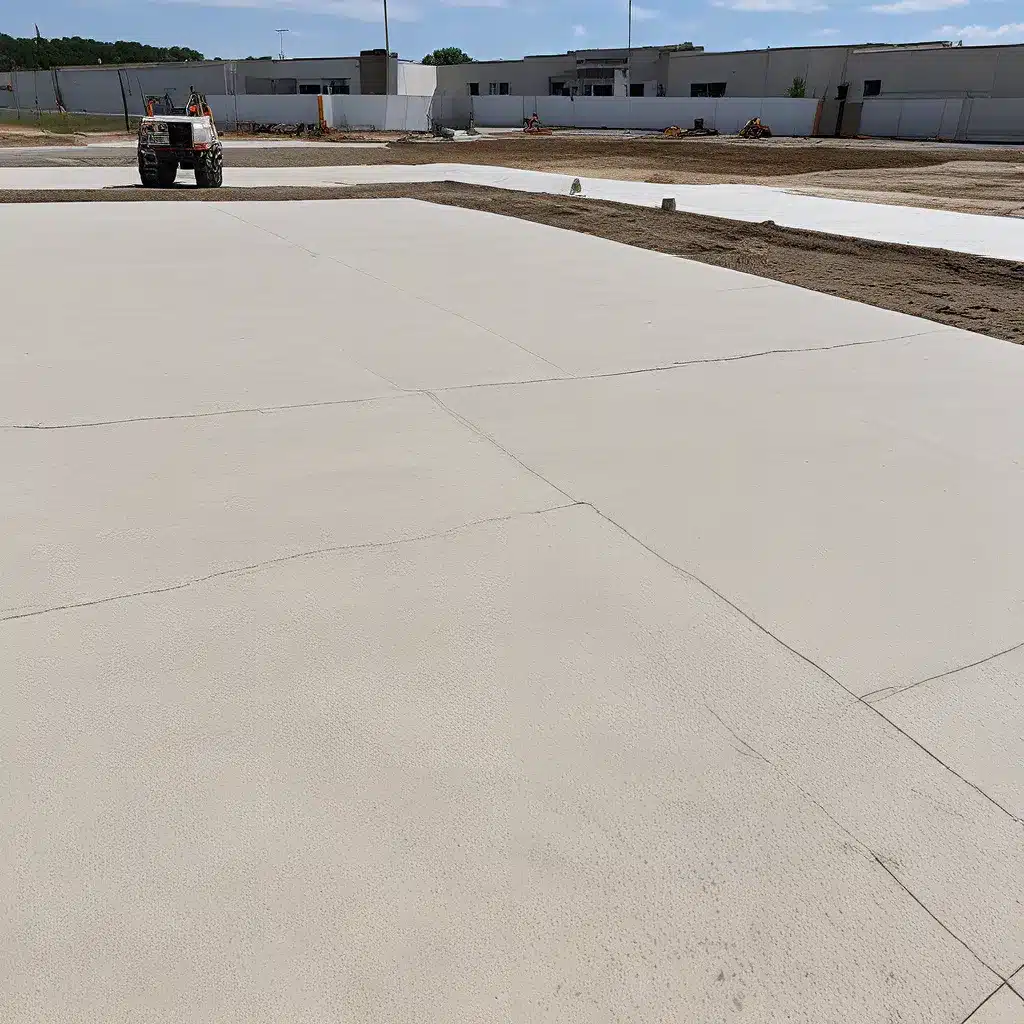
In the dynamic world of construction, mastering the art of concrete placement and finishing is the key to unlocking exceptional results. Whether you’re a seasoned concrete contractor or a homeowner embarking on a DIY project, understanding the intricacies of this process can make all the difference in achieving a flawless, long-lasting finish.
Timing: The Crucial Cornerstone of Concrete Finishing
The timing of concrete finishing is a critical factor that separates good results from outstanding ones. The initial floating process should begin once the concrete surface has firmed up enough to support the weight of the trowel without causing excessive depressions. Starting too early can result in premature surface tearing, while starting too late may make it challenging to achieve a smooth finish.
Mastering the art of timing is the first step towards achieving exceptional results. It’s essential to closely monitor the concrete’s curing process and adjust your approach accordingly. By striking the right balance, you can ensure that the surface is adequately compacted and smoothed, laying the foundation for a flawless final finish.
Blade Pitch and Angle: The Key to Uniform Smoothness
The pitch and angle of the trowel blades significantly affect the quality of the finish. A blade pitch that’s too aggressive can dig into the surface, causing gouges and unevenness. On the other hand, a blade pitch that’s too shallow might not provide adequate compaction.
Finding the right balance and maintaining a consistent blade angle is crucial for achieving a smooth and uniform finish. Experiment with different blade configurations, such as float finish and combination blades, to determine the optimal setup for your specific project requirements. By mastering the nuances of blade control, you can elevate your concrete finishing skills to new heights.
Overlapping Passes: The Secret to Seamless Consistency
While overlapping trowel passes might seem like a basic technique, mastering the art of overlap is key to achieving even compaction and a flawless surface. Overlapping the trowel passes by around 1/3 to 1/2 of the trowel’s width ensures that no areas are missed, creating a consistent finish across the entire surface.
Developing a well-choreographed rhythm and technique for overlapping passes can help you achieve a seamless, uniform appearance. This attention to detail can make all the difference in creating a final product that exceeds your client’s expectations.
Floating vs. Burnishing: Unlocking Different Aesthetic Finishes
Understanding the distinction between floating and burnishing is essential for achieving different surface finishes. Floating involves using the trowel at a higher angle to achieve initial compaction and evenness. Burnishing, on the other hand, involves gradually lowering the angle of the trowel to create a smoother and more polished finish.
Knowing when and how to transition from floating to burnishing can result in exceptional aesthetic outcomes. Experiment with these techniques to explore the full range of possibilities, from a subtle, matte-like finish to a high-gloss, mirror-like sheen.
Blade Patterns: Unleashing Creativity and Customization
Power trowels are available in various blade configurations, including float finish and combination blades. Experimenting with different blade types can help you achieve various textures and finishes. Combination blades, for instance, offer versatility by allowing you to both float and finish in a single pass.
Beyond the traditional back-and-forth technique, exploring circular and random patterns can yield unique and eye-catching results. Circular patterns can break up monotonous finishes, while random patterns can help blend different areas seamlessly.
By incorporating these advanced troweling techniques into your repertoire, you can create concrete surfaces that are not just functional, but also aesthetically remarkable. This level of customization can set your work apart in the competitive Kansas City concrete market, showcasing your dedication to craftsmanship and attention to detail.
Minimizing Imperfections: Mastering Concealment Techniques
No concrete surface is entirely free of imperfections, but advanced trowel techniques can help minimize and even conceal blemishes. Techniques like crosshatching and creating diagonal trowel passes can help eliminate trowel lines and produce a more uniform appearance.
Maintaining control over the power trowel is vital for achieving precision and consistency. Focus on steady, even movements and avoid sudden changes in direction or speed. Maintaining control ensures that the trowel’s blades interact with the surface in a controlled manner, resulting in a polished finish.
Elevating Concrete Finishing in Kansas City
In the ever-evolving world of construction, going beyond the fundamentals can lead to results that speak volumes about your dedication to craftsmanship and quality. By mastering advanced concrete finishing techniques, you can set your work apart in the Kansas City market and provide your clients with unparalleled results.
At Concrete Contractor Kansas City, we are committed to delivering exceptional concrete services that exceed our clients’ expectations. From residential driveways to commercial parking lots, our team of skilled professionals combines advanced techniques with unwavering attention to detail to ensure flawless concrete placement and finishing every time.
Whether you’re a homeowner looking to upgrade your property or a business owner in need of a reliable concrete contractor, our expertise and commitment to excellence can transform your vision into reality. Contact us today to learn more about how we can help you achieve the perfect concrete solution for your needs.

